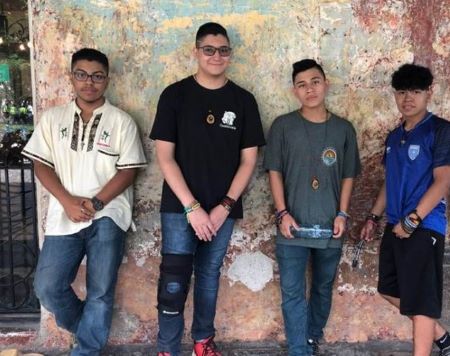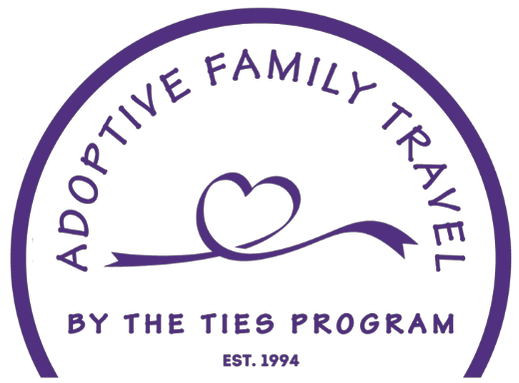
In a study by the Evan B. Donaldson Institute, Hollee McGinnis reports, “For international adoptees positive identity development is most effectively facilitated by lived experiences. Travel to the country of birth topped the list.” Indeed, adoptees embarking on heritage travel are having profoundly significant lived experiences that validate and provide a sought-after first hand knowledge.
What most adoptees know about their birth country, culture, adoption and first family are things other people have experienced and shared with them. The lack of firsthand knowledge is unsettling at best. One Ties participant described it this way, “Whenever anyone asked questions about the circumstances of my birth and adoption or my birth country, I recited it like I was telling a story about someone else. When I got to my birth country, all of that changed.”
Another said, “This has been the best thing a kid like me could ever ask for. The reason I say that is if you would like to understand your own heritage you actually need to go to where you were born. It’s like you’re starting from the beginning again.”
Starting at the Beginning
Ties birth country journeys offer opportunities to revisit chapter one. They incorporate visits to birth cities, finding sites, maternity clinics, hospitals, orphanages and foster homes. Adoptees often meet caregivers, doctors, foster families and more frequently than we imagined early on, birth family. (Note: all visits are choices, not expectations, and sometimes they are not possible or desired. We get that and will support adoptees and their families in what they choose to pursue.)
These experiences provide adoptees validation that their stories are real. There is often a sense that adoptees feel more real themselves as a result.
One teen who traveled recently recounted the emotion he felt when the caregiver at the orphanage called him by his orphanage name. “I had been told Ole was my crib name, but it didn’t seem possible it had really been true. What was even more amazing was that someone remembered ME by that name.”
Adoptees are often surprised to find things like their intake papers, post placement reports and photos (things their parents sent) in a file they can actually see and touch. “When we arrived at the baby home, I saw the same papers that are sitting on the coffee table at home. They even let me take a picture!” a Ties adoptee said with surprise.
Other Ties adoptees have shared:
“I met the doctor who delivered me, and he did a quick physical exam, listening to my heart with a stethoscope and checking in my ears. Even though I’m now 16 years old, he said, ‘You seem to be as healthy as the day I delivered you!’ The idea of a doctor actually delivering me in Korea felt really cool.”
“As an adoptee, the whole day at Social Welfare Society, seeing my file, and meeting my foster family meant the most to me. She was the person who actually cared for me and loved me. When we were having lunch, she kept feeding me, physically feeding me, showing me I had been loved.”
“I went to the park where I was found. I realized I had truly been there and that someone cared enough to take me there. I thought someone had made that up, but now I’ve seen it for myself.”
Birth Family
As you can imagine, meeting birth family has a LOT of impact as well. While not all international adoptees are able (or even desire) to have this experience, there is quite a lot of international birth family reunion happening in most of our programs.
One adoptee sent us this note after his trip: “EVERYTHING changed! When I was younger, even though my parents told me I was loved and adopted, I still felt resentment and insecure. While visiting my birth country and meeting my birth family I had a feeling such as somebody letting the air back into the room. I felt complete and that there was no longer a piece missing.”
This is not to say that meeting birth family is always an intensely satisfying experience. But more often than not, Ties adoptees express positive emotions around the experience, new understandings of circumstances, choices and emotions.
When There’s Nothing
Andrea Christensen recalled how emotional she had become when seeing her file. “I think I had always known there would be nothing there about my birth family, but there was always this part of me that had hope. When there really was nothing, I cried, and I don’t usually cry.” When asked if that experience created greater sadness, she said, “No, I think it brought me more to acceptance and being ok with it.”
In perhaps the most poignant words ever spoken on this topic, Aimee Sonkiss described where the “not knowing” has taken her. “Like those who have lost a parent through illness, or absenteeism, I know I have an emotional burden of the uncertainty, hurt, and unfairness of the situation surrounding my birth parents and unknown history. But like many others, although I can’t say I’ve found peace with the situation, I’ve come to terms with it as a part of my whole. Instead of covering the emotions over and pretending they’re not there, I think I’ve learned to accept their existence and live alongside them.”
Other Ways Adoptees Connect & Validate
Being There Matters
For many adoptees, simply BEING there is intensely significant. Returning from China Ties, Molly McPeak wrote, “I knew I was adopted from China, born in Anhui Province, found somewhere in Tongling City, but when you actually get a chance to go back to your roots, everything seems to come together. Even though I can’t remember the years I was there, it felt like the missing part of me was finally found. I found out the reason behind my name and the actual site where I was found. All the missing information was finally right in front of me. I learned who I truly am.”
Peruvian born Carmen Knight describes it this way, “Through our senses we are able to make a connection to the place where we started our lives. While there are many wonderful things about our countries, there usually are some things that are sad and are hard for us to confront, such as poverty. Yet, the processes of making our birth countries and culture real is acknowledging and accepting the good and the bad. Once we can come to terms with all that is our birth country, we can be proud in where we come from.”
Being There Opens Opportunities
While Eleanor Chin traveled, she interacted with lots of school kids, all wearing uniforms. She remembers, “A desire to have my own uniform kindled inside me.” So, the next day, she and her dad went on a mission to purchase one. “You can only get those in schools” a store owner advised her.
To her surprise, the store owner went on to say, “My daughter graduated. You can have her uniform.” Even more surprisingly, the store owner offered to have it mailed to Eleanor’s next hotel! Can you imagine the power of this stranger’s kindness? Eleanor now has her very own Chinese school uniform. “My happiness in that moment was unsurpassed,” Eleanor told me. “The experience contributed greatly to me as a ‘Chinese girl’ –I’ve always known I was adopted from China, but I feel more connected to those roots now.”
Being There Communicates
Sometimes things that would otherwise go unnoticed have the most impact. “I traveled the summer I turned 12,” recalls this Ties participant. “I cannot even begin to put my experience into words, but I believe this story best captures what the trip meant to me. Upon landing at the capital city airport, I noticed all the models on all the billboards looked like me. For the first time in my life, I truly felt beautiful.”
The guys in our Guatemalan Ties program are also tuned into how their appearance connects them to their birth country. We often find them at the barber shops where stylish haircuts with grooves cut into them are all the rage. We’re pretty sure this picture says it all! (After their haircuts, the boys decided to start a band called The Hot and Spicy Tortillas. This is their cover!)

The Hot & Spicy Tortillas. This is their cover!
Next up in this series: A Homeland Journey Answers Your Child’s Biggest Question: Why?
Other parts in this Identity Series:
Introduction
Birth Country Travel: Upon Arrival
Language and Birth Country Travel
Blending In and Standing Out
